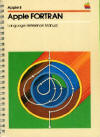In response to the arrival of the Soviet made satellite Sputnik in orbit, U.S. President Dwight Eisenhower formed the Advanced Research Projects Agency (ARPA). They’re given free reign to develop advanced technology with long term potential. Eventually the Internet would form from the ARPANet project.
Eisenhower, a progressive president who believed in technology and science, originally gave ARPA responsibility over all space and missile programs, and their efforts were geared toward space related military technology. However, the development of NASA steals this thunder from ARPA, who become a general purpose R&D agency. Eventually it becomes a part of the computer revolution when it formulates the basic architecture of modern networks and communications.

